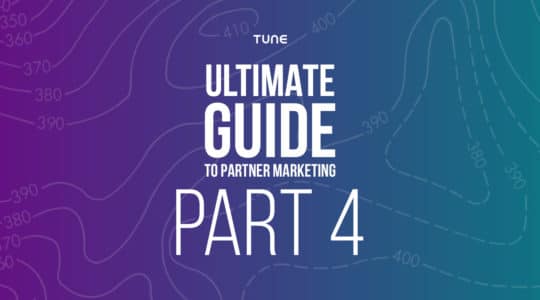
A few days ago, I happened to find myself at McDonald’s with a friend. While I try to avoid fast food, my friend was hungry, and I had a craving for soda. I noticed there were QR codes on the bag of her food and on my cup. I also happened to have a QR code reader on my iPhone, so I took a scan of the QR code to find out where McDonald’s wanted to lead customers.
The ultimate destination? A mobile website of the fast food chain’s nutritional information.
In a company press release, McDonald’s Brand Officer Kevin Newell said, “Customers tell us they want to know more about the food they are eating and we want to make that as easy as possible by putting this information right at their fingertips.”
McDonald’s marketing goal
McDonald’s says this QR code campaign is designed to “engage with customers.” But is leading customers to static nutrition information really engaging? What does McDonald’s really think customers will do with this static information, especially after they already have their 1,000+ calorie meal in hand? (Besides do what I did, which was quickly switch to another app.) At best, the nutritional informational may help customers make healthier choices when they come back to McDonald’s in the future. That said, the campaign does not instill a sense of urgency to return to McDonald’s, which the company clearly does know how to do with other marketing campaigns, such as their Monopoly promotion. This campaign, though, does not drive more visits or purchases (conversions) for McDonald’s. It’s simply informational, which could actually backfire if customers assume future McDonald’s QR Codes will also lead to dry, static information.
In fact, most QR code campaigns fail because they don’t lead users to an engaging and interactive experience. Rather than static nutritional information, McDonald’s could have leveraged the opportunity send users to their interactive nutritional calculator. They could then have used the QR code campaign to drive users to a truly engaging experience (one which users would have undoubtedly wanted to use again.) Other brands have embraced this concept and integrated QR codes into their marketing campaigns to both drive brand engagement and increase brand awareness.
Brand success stories with QR codes
One brand that has used QR codes particularly well has been Heinz. In 2011, Heinz added QR codes on its new new environmentally friendly ketchup bottles in U.S. restaurants to promote the packaging. The QR codes linked to a mobile site where users could win prizes by answering a green knowledge trivia question. After that campaign ended, Heinz reported that more than 1 million consumers scanned the codes. As that campaign was so successful, Heinz used QR codes again at the end of 2012, this time placing them on bottles in a partnership with the Wounded Warrior Project’s Our Turn to Serve campaign. With this campaign, which is still ongoing, consumers can scan the QR code to send a thank-you note to a military serviceperson. In addition Heinz donates $1 to Wounded Warrior for each scan, up to $250,000.
Other brands beyond the food and beverage industry have also utilized QR codes well in marketing campaigns. During New York Fashion Week in 2012, L’Oreal put QR codes in taxis to lead users to a website featuring how-to videos featuring Yves Saint Laurent and Lancôme beauty products. Additionally, users could buy products from the website. The QR code campaign, which was only executed for five days, was effectively designed and placed where a majority of their target demographic was guaranteed to see it, and it worked. L’Oreal reported a 7% overall purchase conversion rate from the QR codes, and downloads of the app increased by approximately 80%.
L’Oreal and Heinz are two great examples of using QR codes to drive conversions and increase brand awareness. As an advertiser you should always be thinking about the needs of the user when you create a campaign, but even before that you need to ask one simple question. What is the benefit of the marketing campaign for your brand? Unless the ultimate goal of the campaign is to drive conversions — or at the very least increase brand awareness — you should reconsider the campaign. This is a lesson that even a major brand like McDonald’s could afford to learn when it comes to rolling out QR code campaigns.
Like this article? Sign up for our daily blog digest right in your inbox.
Author
Becky is the Senior Content Marketing Manager at TUNE. Before TUNE, she handled content strategy and marketing communications at several tech startups in the Bay Area. Becky received her bachelor's degree in English from Wake Forest University. After a decade in San Francisco and Seattle, she has returned home to Charleston, SC, where you can find her strolling through Hampton Park with her pup and enjoying the simple things between adventures with friends and family.



